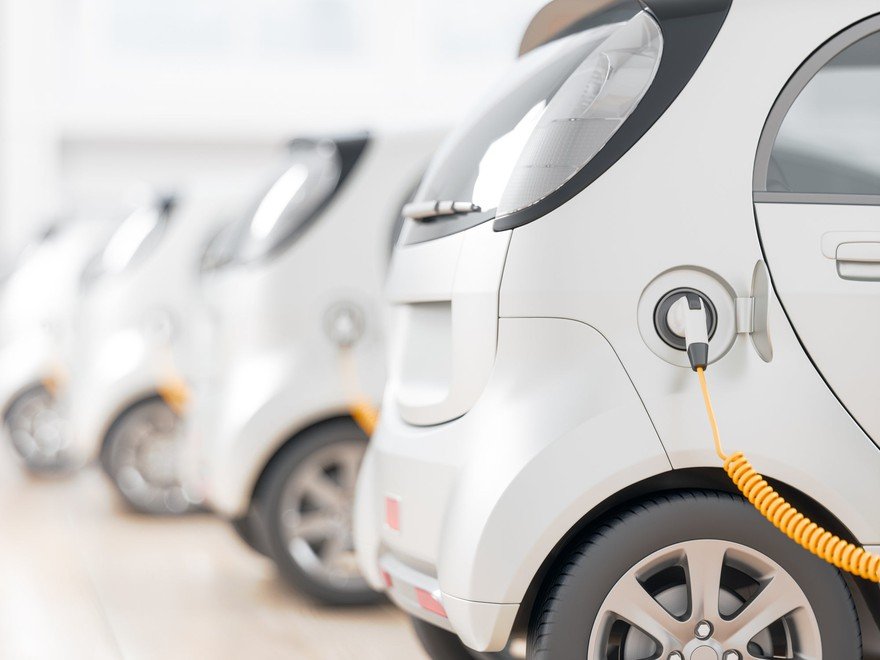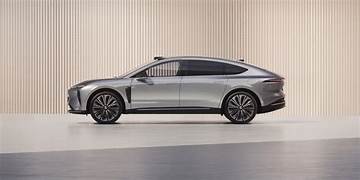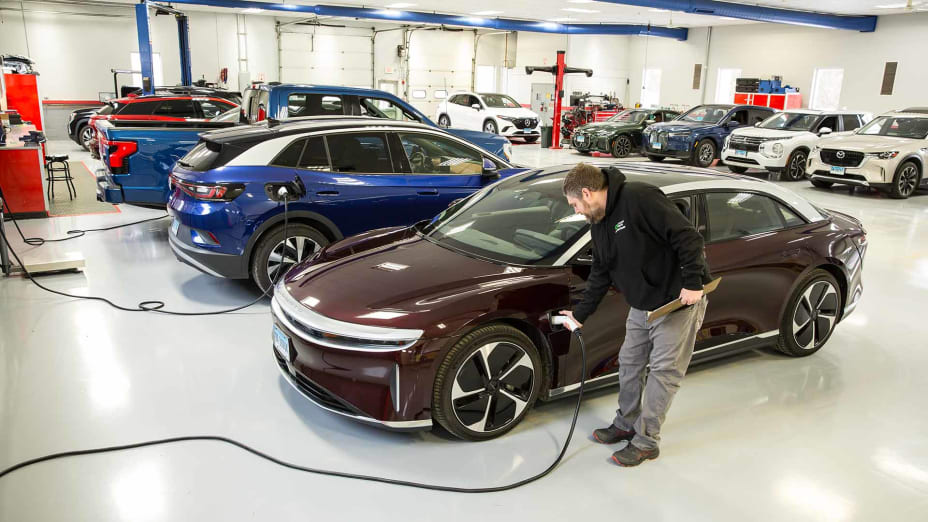The automotive industry has undergone a revolutionary transformation over the past decade, with electric vehicles emerging from niche status to become the preferred choice for discerning buyers worldwide.
Premium electric vehicles now represent the pinnacle of automotive engineering, combining zero-emission performance with luxury appointments, advanced technology, and impressive driving dynamics that rival or exceed their internal combustion counterparts.
This comprehensive guide explores the most compelling premium electric vehicles currently available, helping you make an informed investment decision that aligns with both your lifestyle requirements and financial objectives.
Understanding the Premium Electric Vehicle Market Evolution
The luxury electric vehicle segment has experienced exponential growth as established automotive manufacturers and innovative startups alike recognize the immense potential of electric propulsion.
Traditional luxury brands including Mercedes-Benz, BMW, Audi, and Porsche have invested billions in developing electric platforms that maintain their heritage of refinement while embracing sustainable technology.
Meanwhile, Tesla continues pushing boundaries as the industry disruptor that catalyzed this entire movement.
Premium electric vehicles distinguish themselves through several critical factors that justify their elevated price points.
Advanced battery technology provides extended range capabilities that eliminate range anxiety for most driving scenarios.
Sophisticated thermal management systems ensure optimal performance across diverse climate conditions.
Premium materials throughout the cabin create an environment befitting vehicles in this price category.
Finally, cutting-edge autonomous driving capabilities and connectivity features position these vehicles at the forefront of automotive innovation.
The total cost of ownership equation for premium electric vehicles has become increasingly favorable as electricity rates remain relatively stable compared to volatile gasoline prices.
Maintenance requirements decrease dramatically without oil changes, transmission services, or exhaust system repairs.
Many jurisdictions offer substantial tax incentives, rebates, and preferential treatment including carpool lane access and reduced registration fees.
These factors combine to make premium electric vehicles not merely environmentally conscious choices but financially prudent investments.
Leading Premium Electric Sedans Redefining Luxury

The Tesla Model S: Pioneer of Premium Performance
The Tesla Model S established the template for premium electric sedans when it launched over a decade ago, and continuous updates have kept it competitive against newer rivals.
The current generation offers multiple configurations, with the top-tier Plaid variant delivering mind-bending performance that rivals million-dollar hypercars.
Zero to sixty acceleration in under two seconds redefines what sedans can achieve, while a range exceeding 400 miles ensures practicality for long-distance travel.
The interior has evolved significantly from earlier iterations, now featuring a minimalist aesthetic dominated by a massive central touchscreen controlling virtually all vehicle functions.
Premium materials including sustainably sourced wood accents and vegan leather alternatives appeal to environmentally conscious luxury buyers.
The yoke-style steering wheel option generates controversy but exemplifies Tesla’s willingness to challenge automotive conventions.
Advanced Autopilot capabilities included as standard provide sophisticated driver assistance, while Full Self-Driving capability remains available as an expensive upgrade.
The extensive Supercharger network represents Tesla’s most significant competitive advantage, providing convenient high-speed charging across continents.
Over-the-air software updates continuously improve vehicle functionality and add new features, ensuring your investment remains current throughout your ownership period.
Mercedes-Benz EQS: Traditional Luxury Meets Electric Innovation
Mercedes-Benz entered the premium electric sedan segment with characteristic thoroughness, developing a dedicated electric platform rather than adapting existing architectures.
The EQS showcases the Stuttgart brand’s interpretation of electric luxury, emphasizing refinement, comfort, and cutting-edge technology.
The stunning drag coefficient of just 0.20 makes it the most aerodynamic production vehicle available, contributing to impressive efficiency and range.
The interior represents a masterclass in luxury automotive design, with the optional Hyperscreen spanning nearly the entire dashboard width.
This integrated display houses three separate screens behind a single curved glass panel, creating a futuristic yet elegant aesthetic.
Traditional Mercedes craftsmanship evident in the premium leather, real wood, and metal accents reminds occupants they’re experiencing genuine luxury rather than silicon valley minimalism.
The EQS drives with the refined quietness expected from the S-Class lineage, isolating occupants from road imperfections and wind noise.
Multiple powertrain options accommodate varying performance preferences and budget considerations, from efficient rear-wheel-drive variants to all-wheel-drive performance models.
The sophisticated air suspension adapts constantly to road conditions, while rear-wheel steering enhances maneuverability despite the car’s substantial dimensions.
Porsche Taycan: Sports Car DNA in Electric Form
Porsche approached electric vehicle development from a performance-first perspective, creating the Taycan as a legitimate sports sedan that happens to be electric rather than an electric car attempting to be sporty.
The results speak for themselves, with handling dynamics that uphold Porsche’s legendary reputation. The low-mounted battery pack creates an ideal center of gravity, while sophisticated chassis tuning delivers engaging driving characteristics unusual in electric vehicles.
The two-speed transmission represents unique engineering in the EV space, enabling both explosive acceleration and efficient high-speed cruising.
Track-focused variants like the Taycan Turbo S demonstrate genuine performance capability with repeatable high-speed runs that don’t suffer from thermal management issues plaguing some competitors.
The 800-volt electrical architecture enables remarkably fast charging, adding significant range in mere minutes at compatible high-power charging stations.
Interior appointments reflect Porsche’s driver-focused philosophy with a cockpit-style dashboard wrapping around the driver.
Multiple displays provide comprehensive information without overwhelming, while premium materials and meticulous build quality justify the substantial investment.
The optional Sport Chrono package adds performance-enhancing features including launch control and a stopwatch for timing your track sessions.
Premium Electric SUVs Combining Practicality with Performance
Tesla Model X: The Original Premium Electric SUV
Tesla’s Model X pioneered the premium electric SUV category with its distinctive falcon-wing rear doors and impressive performance specifications.
The spacious three-row configuration accommodates up to seven passengers, making it suitable for families requiring substantial people-moving capability.
Despite its size and weight, the Model X accelerates with shocking rapidity, particularly in Plaid specification that rivals sports cars.
The elevated seating position provides commanding road visibility while maintaining Tesla’s minimalist interior approach.
A massive panoramic windshield extending overhead creates an airy cabin atmosphere that passengers consistently praise.
The advanced air filtration system with bioweapon defense mode might seem excessive but provides peace of mind in areas with poor air quality or during wildfire season.
Towing capacity reaching 5,000 pounds enables recreational use for boat or trailer hauling, expanding the vehicle’s utility beyond daily transportation.
The extensive cargo area with folding second and third rows accommodates large items when passenger capacity isn’t required.
Tesla’s charging infrastructure and over-the-air updates provide the same advantages enjoyed by Model S owners.
BMW iX: Bavarian Engineering Meets Electric Future
BMW’s flagship electric SUV represents the Munich manufacturer’s comprehensive vision for sustainable luxury mobility.
The iX features distinctive styling that polarizes opinion but undeniably stands out in parking lots.
The massive kidney grille, though non-functional for cooling, houses advanced sensors enabling sophisticated driver assistance features.
The overall proportions suggest substantial presence without appearing bloated.
Interior innovation defines the iX experience, with a curved display combining instrument cluster and infotallment functions behind a single glass panel.
The latest iDrive interface utilizing BMW’s Operating System 8 responds to voice commands, gesture controls, and traditional inputs.
Sustainable materials including recycled plastics, FSC-certified wood, and olive-tanned leather demonstrate commitment to environmental responsibility beyond zero tailpipe emissions.
The driving experience emphasizes comfort and refinement rather than outright performance, though acceleration remains more than adequate for any real-world scenario.
Adaptive air suspension ensures composed handling while isolating occupants from road imperfections.
The available xDrive50 variant provides all-wheel drive and extended range exceeding 300 miles, addressing concerns about electric vehicle practicality for longer journeys.
Mercedes-Benz EQS SUV: Ultimate Electric Luxury Hauler
Building on the EQS sedan’s success, Mercedes expanded the electric lineup with an SUV variant maintaining the same commitment to luxury and technology.
The EQS SUV provides additional ground clearance and cargo capacity while preserving the sedan’s sophisticated powertrain and electrical architecture.
The available seven-passenger configuration competes directly with established luxury SUVs while offering zero-emission operation.
The cabin mirrors the sedan’s approach with available Hyperscreen technology and premium appointments throughout.
Third-row passengers enjoy surprising comfort for the segment, with adequate headroom and legroom for adults on shorter trips.
The power-folding third row enables flexible cargo configurations when maximum carrying capacity isn’t required.
Advanced air suspension with adaptive damping provides the smooth, isolated ride quality Mercedes customers expect.
The available AMG variant delivers substantially increased performance for buyers prioritizing driving dynamics.
Comprehensive driver assistance features approach truly autonomous capability in appropriate conditions, though constant driver supervision remains mandatory.
Rivian R1S: Adventure-Ready Electric Luxury
Rivian emerged as a compelling electric vehicle manufacturer focusing on adventure-oriented products combining genuine off-road capability with premium appointments.
The R1S represents their SUV offering, featuring distinctive styling that balances modern aesthetics with functional purposefulness.
The truck-based platform provides genuine off-road credentials unusual in the luxury electric segment.
Quad-motor all-wheel drive delivers independent torque vectoring enabling remarkable capability on challenging terrain.
Substantial ground clearance and sophisticated suspension articulation handle obstacles that would challenge traditional luxury SUVs.
The available Camp Kitchen accessory transforms the vehicle into a mobile base camp for extended wilderness adventures.
The interior features sustainable materials and thoughtful storage solutions throughout the cabin.
The seven-passenger configuration provides flexibility for family duty while maintaining premium comfort on long journeys.
The innovative gear tunnel running between the front and rear wheels offers secure storage for outdoor equipment or other cargo requiring protection from weather.
Critical Factors When Evaluating Premium Electric Vehicles
Battery Technology and Real-World Range Considerations
Battery capacity directly impacts vehicle range, but other factors significantly influence real-world performance.
Aerodynamic efficiency, rolling resistance, climate control usage, and driving style all affect how far you’ll travel on a full charge.
Manufacturers advertise range figures based on standardized testing that doesn’t necessarily reflect typical driving conditions.
Cold weather can reduce range by twenty to thirty percent as battery chemistry becomes less efficient and cabin heating draws substantial power.
Understanding your actual driving patterns helps determine adequate range requirements. Most people overestimate their daily mileage needs, with average commutes falling well within even modest electric vehicle ranges.
However, longer road trips require careful planning and understanding of available charging infrastructure along your route. Premium electric vehicles generally offer extended range capabilities that minimize charging stops during long-distance travel.
Battery degradation represents a legitimate long-term consideration, though modern battery management systems have dramatically improved longevity compared to earlier electric vehicles.
Most manufacturers warranty battery capacity for eight years or 100,000 miles, guaranteeing minimum charge retention.
Real-world data suggests properly maintained batteries retain eighty-five to ninety percent capacity after ten years, ensuring your investment maintains utility throughout typical ownership periods.
Charging Infrastructure and Home Installation Requirements
Home charging provides the most convenient solution for daily recharging, allowing you to start each day with a full battery.
Level 2 charging equipment operating at 240 volts can fully replenish most electric vehicles overnight. Professional installation costs vary based on your electrical panel capacity, distance from the panel to charging location, and local permit requirements.
Budget between $500 to $2,000 for typical residential installations.
Public charging infrastructure continues expanding rapidly, particularly in urban areas and along major travel corridors.
Tesla’s Supercharger network remains the most extensive and reliable, though other manufacturers are developing comparable networks.
Third-party charging providers including Electrify America, EVgo, and ChargePoint operate thousands of stations nationwide. Understanding charging speeds and connector types helps you identify compatible stations for your specific vehicle.
Charging at public stations typically costs more than home electricity but remains significantly cheaper than gasoline for equivalent travel distances.
Subscription plans offered by various charging networks can reduce per-session costs for frequent users. Some premium electric vehicles include complimentary charging credits or subscriptions for initial ownership periods, adding value to your purchase.
Technology Features and Autonomous Driving Capabilities
Premium electric vehicles showcase the latest automotive technology, with sophisticated driver assistance systems approaching fully autonomous operation in specific scenarios.
These features enhance safety, reduce driver fatigue during long journeys, and provide a glimpse of future transportation paradigms.
However, capabilities vary significantly between manufacturers and specific trim levels.
Adaptive cruise control maintaining set distances from vehicles ahead represents baseline functionality in this segment.
Lane-keeping assistance actively steers to maintain position within lane markings. More advanced systems enable hands-free operation on mapped highways while monitoring driver attention through cameras or steering wheel sensors.
Understanding the specific capabilities and limitations of your vehicle’s systems ensures safe and effective utilization.
Over-the-air update capability allows manufacturers to continuously improve vehicle functionality and add features after purchase.
Tesla pioneered this approach in the automotive space, regularly rolling out improvements to existing vehicles.
Traditional manufacturers have embraced this technology, ensuring your premium electric vehicle maintains current software throughout your ownership experience.
This capability represents a fundamental shift from traditional automotive ownership where your vehicle’s capabilities remain static.
Total Cost of Ownership Analysis
Premium electric vehicles command substantial purchase prices, but comprehensive cost analysis reveals favorable economics compared to similarly priced internal combustion vehicles.
Electricity costs significantly less than gasoline per mile traveled, with typical savings of sixty to seventy percent on fuel expenses.
Maintenance requirements decrease dramatically without oil changes, transmission services, spark plugs, exhaust systems, or timing belts requiring replacement.
Brake systems experience reduced wear due to regenerative braking handling most deceleration, with friction brakes engaging primarily for emergency stops.
Tire wear may increase slightly due to heavier curb weights and instant torque delivery, but this represents the primary consumable requiring regular replacement.
Battery warranties provide peace of mind regarding the most expensive component, though real-world longevity exceeds most owners’ expectations.
Federal tax credits up to $7,500 reduce effective purchase prices for qualifying vehicles from manufacturers who haven’t exceeded production thresholds.
Many states and localities offer additional incentives including rebates, reduced registration fees, and carpool lane access regardless of occupancy.
Calculating your specific total cost of ownership considering these factors often reveals premium electric vehicles costing less over typical ownership periods than comparable luxury internal combustion vehicles.
Financing and Leasing Strategies for Premium Electric Vehicles
Traditional Financing Considerations
Conventional auto loans for premium electric vehicles function similarly to financing any high-value automobile. Interest rates depend on your credit profile, loan term, down payment, and lender policies.
The rapidly evolving electric vehicle market creates uncertainty regarding residual values, potentially complicating long-term financing decisions.
However, established luxury manufacturers with proven resale value histories provide more predictable depreciation curves than newer entrants.
Extended loan terms exceeding sixty months reduce monthly payments but increase total interest paid over the loan life.
Larger down payments reduce borrowed amounts and may qualify you for more favorable interest rates. Some manufacturers offer preferential financing rates through captive finance companies to stimulate sales of specific models or during promotional periods.
Leasing as a Strategic Approach
Leasing presents compelling advantages for premium electric vehicle adoption given rapid technological advancement and evolving infrastructure.
Short lease terms of two to three years allow you to upgrade to newer models featuring improved battery technology, extended range, and enhanced features without being locked into a rapidly depreciating asset.
Mileage restrictions typical of leases align well with electric vehicle strengths in daily driving and commuting scenarios.
Lower monthly payments compared to financing enable access to more expensive vehicles than you might afford purchasing outright.
Leasing avoids long-term battery degradation concerns since you’ll return the vehicle before significant capacity loss occurs.
Tax incentives may provide greater benefit when leasing, as the leasing company receives the federal tax credit and theoretically passes savings through reduced lease payments.
End-of-lease options provide flexibility as the electric vehicle market continues evolving.
You can return the vehicle and lease the latest model, purchase the vehicle at predetermined residual value if you’re satisfied with its performance, or explore other manufacturers’ offerings.
This flexibility proves particularly valuable during periods of rapid technological advancement.
Specialty Electric Vehicle Financing Programs
Some lenders offer specialized financing programs specifically for electric vehicles, recognizing their favorable total cost of ownership profiles.
These programs may feature reduced interest rates, extended terms, or flexible payment structures accounting for fuel savings.
Environmental credit unions and sustainability-focused financial institutions sometimes provide preferential treatment for electric vehicle purchases.
Manufacturer financing programs occasionally include perks like complimentary charging subscriptions, extended warranties, or maintenance packages adding value beyond the basic purchase price.
Carefully compare total costs including all incentives and programs to identify the most advantageous financing arrangement for your specific situation.
Insurance Considerations for Premium Electric Vehicles
Premium electric vehicles typically cost more to insure than comparable internal combustion luxury vehicles due to several factors.
Higher purchase prices increase comprehensive and collision coverage costs. Expensive battery packs and sophisticated technology increase repair costs following accidents.
Limited repair facilities qualified to service high-voltage systems reduce competition and increase labor rates.
However, advanced safety features standard in most premium electric vehicles may qualify for insurance discounts offsetting some of the increased costs.
Automatic emergency braking, lane departure warning, blind spot monitoring, and other technologies reduce accident likelihood and severity. Some insurers offer specific electric vehicle discounts recognizing their safety advantages.
Obtaining multiple insurance quotes proves essential when purchasing premium electric vehicles. Rates vary dramatically between carriers based on their specific underwriting criteria and comfort level with electric vehicle technology.
Specialty insurers focusing on electric vehicles sometimes offer more competitive rates than traditional carriers still developing pricing models for this relatively new vehicle category.
Environmental Impact and Sustainability Considerations
Premium electric vehicle ownership represents meaningful environmental contribution beyond eliminating tailpipe emissions.
Manufacturing environmental impacts remain higher than conventional vehicles primarily due to battery production, but lifecycle analysis consistently demonstrates net environmental benefits.
The break-even point where electric vehicles offset their higher manufacturing emissions occurs within one to two years of typical driving.
Electricity grid composition significantly impacts environmental benefits, with regions relying on renewable energy sources maximizing emissions reductions.
However, even in areas dependent on fossil fuel power generation, electric vehicles produce fewer emissions than internal combustion vehicles due to power plant efficiency advantages over individual vehicle engines.
The grid continues transitioning toward renewable sources, automatically improving your vehicle’s environmental profile without any action on your part.
Battery recycling infrastructure continues developing to recover valuable materials including lithium, cobalt, and nickel. Manufacturers are investing in closed-loop systems where recycled battery materials supply new battery production.
Second-life applications for degraded automotive batteries include stationary energy storage supporting renewable energy integration. These developing industries ensure electric vehicle batteries contribute to circular economy principles rather than creating waste streams.
The Future of Premium Electric Vehicles
Continued technological advancement promises even more compelling premium electric vehicles in coming years.
Solid-state battery technology under development by multiple manufacturers promises significantly increased energy density, enabling extended range without increasing battery size or weight. Faster charging capabilities approaching gasoline refueling speeds will eliminate the final practical disadvantage compared to conventional vehicles.
Autonomous driving technology continues advancing toward true self-driving capability, though regulatory frameworks lag behind technical capabilities.
Premium electric vehicles will likely pioneer widespread autonomous features given their sophisticated electrical architectures and computing platforms. The combination of electric propulsion and autonomous capability represents the automotive industry’s ultimate destination.
Vehicle-to-grid technology enabling electric vehicles to supply power back to electrical grids during peak demand periods could provide additional value and revenue streams for owners.
This capability could offset ownership costs while supporting renewable energy integration by providing distributed energy storage. Premium electric vehicles with large battery capacities prove particularly suitable for these applications.
Making Your Premium Electric Vehicle Investment Decision
Choosing among premium electric vehicles requires careful consideration of your specific needs, preferences, and circumstances.
Performance priorities, passenger and cargo requirements, desired technology features, and brand preferences all influence the optimal choice. Extended test drives in various conditions provide invaluable insight beyond specifications and reviews.
Consider your typical driving patterns and charging access when evaluating range requirements. If you have reliable home charging and rarely drive more than 250 miles daily, virtually any premium electric vehicle will meet your needs.
Frequent long-distance travel requires more careful evaluation of range capabilities and charging infrastructure along your typical routes.
Brand reputation and dealer network quality impact long-term ownership satisfaction. Established luxury manufacturers offer extensive service networks and proven parts availability.
Newer entrants may provide more innovative technology but potentially face challenges with service capacity as they scale operations. Research owner satisfaction ratings and service experiences before committing to any manufacturer.
Conclusion
Premium electric vehicles represent the convergence of environmental responsibility, cutting-edge technology, and luxury automotive tradition.
The segment offers compelling options for virtually any preference, from sports sedan performance to adventure-ready SUV capability.
The favorable total cost of ownership, combined with exceptional driving experiences and minimal environmental impact, makes premium electric vehicles sound investments for discerning buyers.
The electric vehicle market continues maturing rapidly, with increasing model availability, expanding charging infrastructure, and improving technology.
However, waiting for the perfect vehicle means missing the substantial benefits available today. Current premium electric vehicles provide proven, reliable transportation combining zero-emission operation with luxury appointments and performance that satisfy the most demanding drivers.
Your premium electric vehicle investment represents more than transportation—it’s a statement about your values, an embrace of technological progress, and a contribution toward sustainable mobility.
Whether you choose established luxury manufacturers bringing decades of refinement to electric platforms or innovative newcomers redefining automotive conventions, you’ll experience driving pleasure previously unimaginable from zero-emission vehicles.
The future of premium automotive transportation has arrived, and it’s electrifying in every sense.











